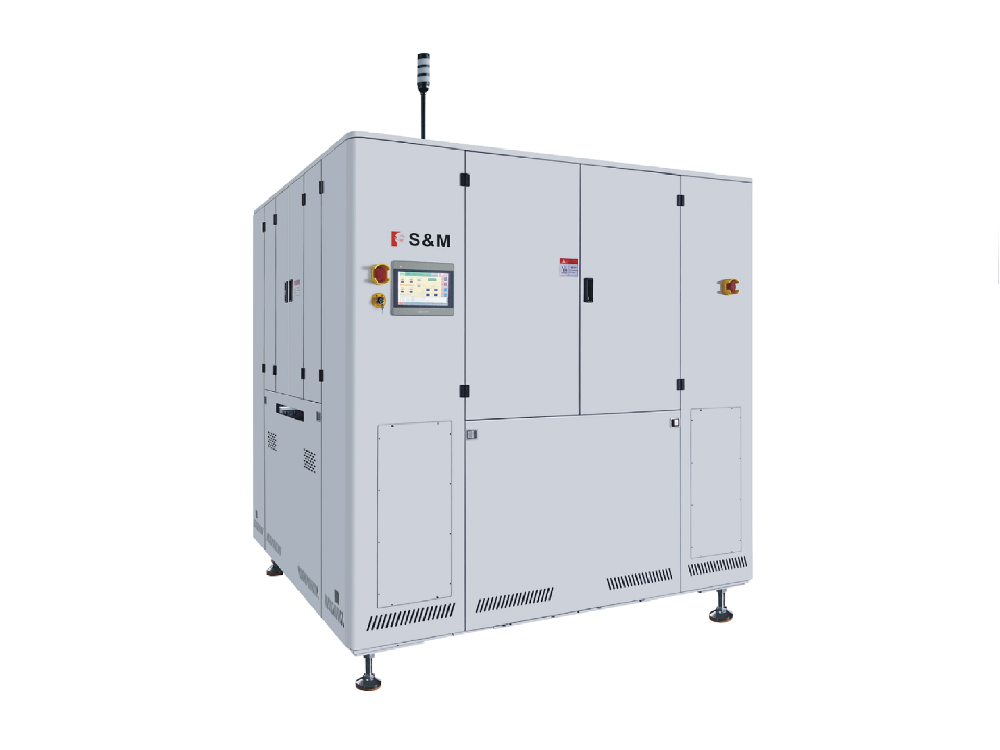Il curing furnace is a kind of equipment used to enhance the bonding stress between materials. It is widely used in the electronics industry, new energy vehicles, fluid precision filling, and other application fields.
Caratteristiche
Il design della trasmissione è più scientifico e il rischio di inceppamento è ridotto al minimo: la trasmissione interna non ha punti di connessione e il trasporto è fluido.
Schermatura intelligente dello strato di guasto per migliorare l'efficienza operativa: durante il funzionamento dell'apparecchiatura, quando la barra di supporto di un determinato strato o di più strati del forno verticale è in avaria, la schermatura dello strato di passaggio della piastra può essere selezionata nel sistema operativo, il che non influisce sull'uso dell'apparecchiatura. Tuttavia, il forno verticale comunemente in commercio non dispone di questa funzione.
Adjustable operation range, more energy saving, and consumption reduction: the vertical furnace with a material frame can realize small cycle action, and the product does not need to pass through the top layer.
Innovativo trasporto attivo a rullini e rifiuto dell'inceppamento e del danneggiamento delle piastre: quando si utilizzano (veicoli) si fermano quando sono bloccati, mentre il forno verticale dove la catena tradizionale spinge i prodotti (apparecchi) a muoversi agisce con forza quando sono bloccati, con il risultato che i prodotti quando sono bloccati, con il risultato che i prodotti.
Forno di stagionatura Main Advantages
Significant labor savings: Compared with offline curing ovens, this machine has fully automatic board loading and unloading, completely eliminating the labor of taking and placing products in offline curing ovens.
Improve curing quality: Compared with offline curing furnaces, there is no need to open and close the furnace when manually placing and taking products, the temperature inside the furnace is more stable and the product quality is better.
Significantly reduce floor space: Compared with horizontal curing ovens (or conventional SMT reflow ovens), the floor space of vertical ovens with the same production capacity is reduced several times or even dozens of times.
Improve energy utilization: Compared with horizontal curing ovens (or conventional SMT reflow ovens), the basic principle of hot air moving upward is fully utilized, and the thermal energy utilization is more sufficient.
SMT Line position
Vertical curing ovens are mainly arranged in the back end of the SMT process, for the drying or curing process after dispensing or coating. They are suitable for the drying or curing process after dispensing or coating of bottom filler and conformal coating (including conformal coating). The operating temperature range is usually room temperature to 180°C, and the drying or curing time is usually 10 to 120 minutes, which can be adjusted according to the process requirements of the specific glue type.
If the factory capacity demand is too large, the drying or curing time is too long, and there is a mismatch or contradiction, it is recommended to adopt a 1-to-N wiring mode, that is, one dispensing or coating production line is equipped with multiple vertical ovens.
Daily maintenance
Remove the debris outside the machine, and wipe the external dust with a cloth.
After the machine cools down, open the inlet and outlet doors and clean the debris and dust inside the machine.
Check whether the screws of each transmission part are loose. If they are loose, they need to be tightened.
Clean and lubricate each transmission shaft. The grease must be resistant to high temperatures.
Check and clean the surface of each sensor (such as optical fiber), focusing on the sensing surface, which needs to be wiped and cleaned.

